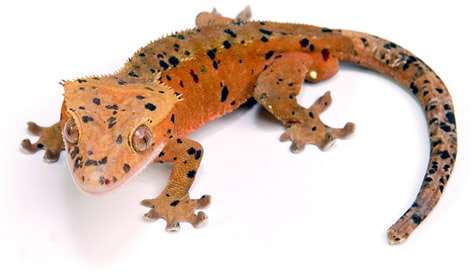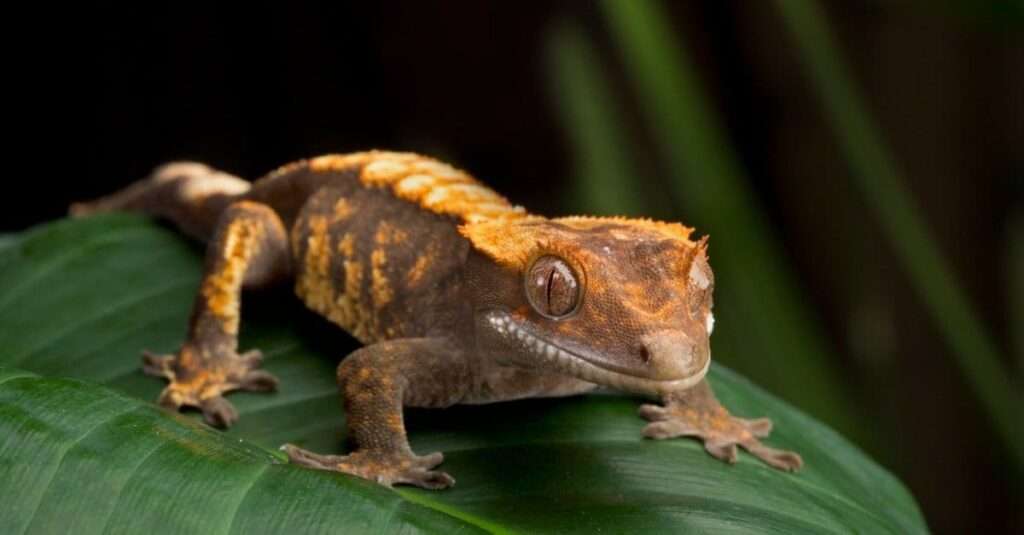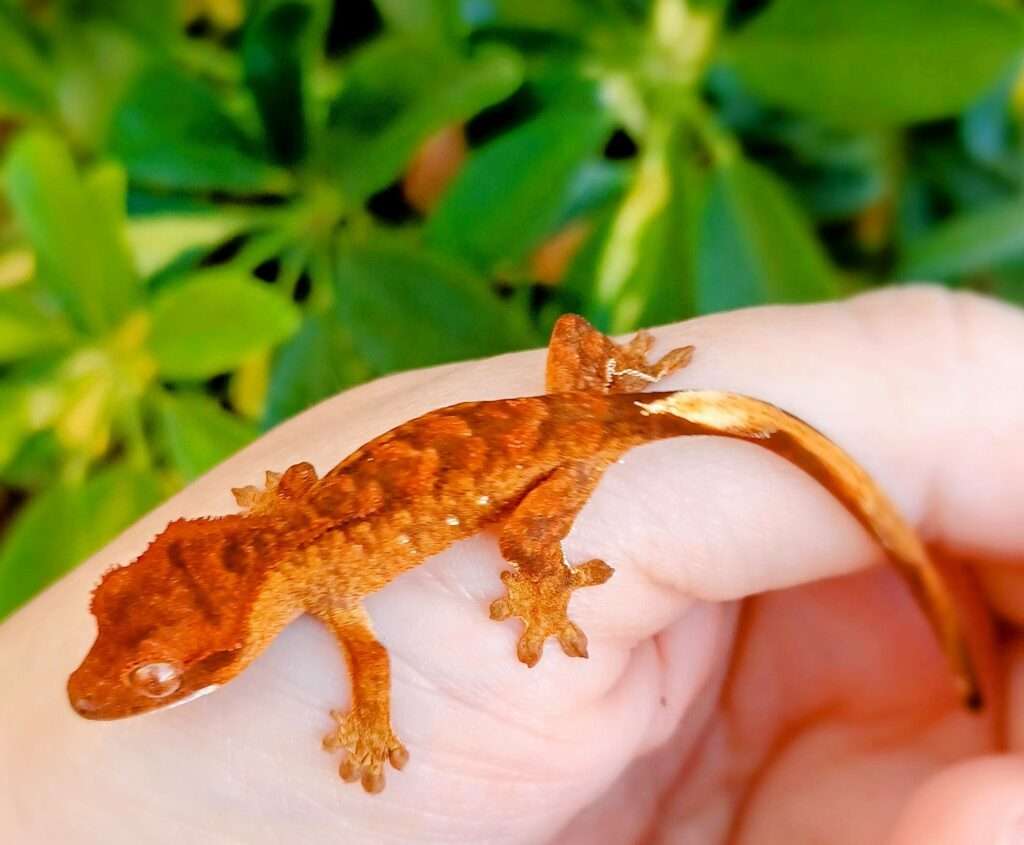
Description:
Scientific name: Correlophus ciliatus
Life span: 10-20 years
The bodies of Dalmatian Crested geckos are covered in a pattern of contrasting spots that vary in intensity, just like Dalmatian dogs. On their head, they have features that resemble fringes. As in other crested gecko variants like the Harlequin Crested gecko and Baby Crested gecko, their crest extends from head to tail. They lack eyelids, unlike Leopard geckos, and have a wedge-shaped head.
Native Region/Habitat
Crested geckos can be housed in vertical enclosures with lots of cover and climbing opportunities since they are native to the woods of New Caledonia.
Behavior:
They can jump really well, too. Although they can be a little timid and need to be handled carefully, crested geckos often have calm dispositions. Avoid handling them if you can because they typically dislike it. They might attempt to jump off of you, which could hurt them.
Care As a pet/In captivity:

Enclosure: Choose a terrarium that is at least 20 gallons in capacity, however going larger is perfectly acceptable. It is necessary for the terrarium to be 29 gallons in size if you have two or three crested geckos. Be sure that each tank has only one male.
Feeding: Using a commercial food and periodically supplementing it with insects like crickets, roaches, wax worms, and silkworms is the simplest way to feed your gecko. To ensure that the gecko receives all of the calcium and vitamin D3 it requires, it is crucial to choose gut-loaded insects.
You can give your Dalmatian Crested Gecko some mashed fruit as a treat. Bananas, nectarines, mangoes, pears, and passionfruit are among their favorites.
Heating (Temperature & Humidity): Your Crested Gecko must have heating to stay healthy. As they have cold blood, these species are unable to control their own body temperature. Because of this, the cage must have a temperature gradient.
During the day, have a temperature gradient between 72 degrees Fahrenheit and 80 degrees Fahrenheit. At night, lower that gradient to 65 degrees Fahrenheit and 75 degrees Fahrenheit. Make sure the temperature is as stated by using temperature gauges.
Your gecko needs a lot of humidity, too. Humidity levels should hover around 60% throughout the day and rise to roughly 80% at night. Regular spraying can raise humidity, especially at night when geckos are most active.
Table





